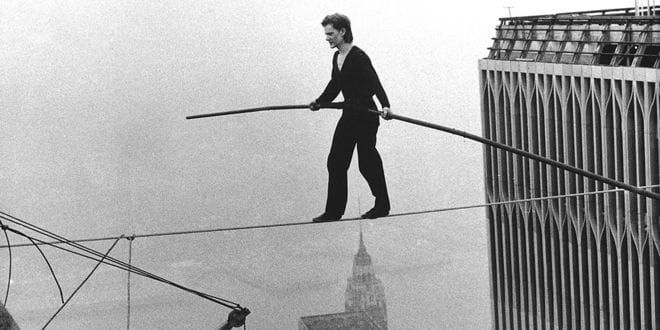The Most Important Rule in Investing: Avoid Big Risks

When we first start investing, our minds often jump to the question: How can I make money in the market? But maybe that’s the wrong question. Instead, we should ask: How can I avoid losing money?
This shift in mindset is at the core of Pulak Prasad’s book, What I Learned About Investing from Darwin. Prasad, an equity fund manager and founder of Nalanda Capital (which manages over $5 billion), blends evolutionary biology with investing wisdom to offer a unique perspective on risk. His investment philosophy is simple:
- Avoid big risks.
- Buy high-quality businesses at a fair price.
- Don’t be lazy—be very lazy.
While all three are important, today I want to focus on the first and most critical rule: Avoiding big risks. Because before you can make money, you have to learn how not to lose it.
The Skill of Not Investing
Most investment books teach us how to find great businesses, spot opportunities, and maximize returns. Few, however, emphasize the flipside: how not to lose money. And yet, avoiding losses is what separates great investors from those who burn out quickly.
Pulak shares a story from his early days at Warburg Pincus, a global private equity firm. A successful entrepreneur approached the firm for funding. The business had scale, large clients, and overseas expansion potential. Due diligence was thorough management was vetted, customer interviews conducted, forensic checks performed, and legal firms brought in. Everything looked solid.
Warburg Pincus invested $50 million.
And yet, the outcome? A total loss.
This example highlights the harsh reality of investing: even after extensive research, things can still go wrong. That’s why understanding risk is the foundation of a long and successful investing career.
The Two Types of Errors in Investing
Prasad introduces a framework from statistics to explain investment mistakes:
- Type 1 Error – Investing in a bad company because you think it’s a good one.
- Type 2 Error – Passing on a great company because you think it’s bad.
Some investors are overly optimistic, making Type 1 errors by investing in everything that looks promising. Others are too cautious, making Type 2 errors by rejecting great opportunities.
So, which is worse?
Prasad argues that it’s far better to avoid Type 1 errors (big mistakes) than to worry about missing a few great investments. The reason? A few missed opportunities won’t kill you—but a single disastrous investment can.
Lessons from Evolutionary Biology
This principle of avoiding big risks isn’t just an investing concept—it’s a survival instinct hardwired into nature.
Take a deer at a watering hole. It’s thirsty, but it knows predators—lions, crocodiles—could be lurking. If it underestimates the danger (Type 1 error), it could be killed. That’s why prey animals are hyper-alert, sometimes seeing threats that aren’t there. That paranoia keeps them alive.
Even predators avoid Type 1 errors. A cheetah won’t chase prey that’s too large or dangerous. Attacking a water buffalo could lead to fatal injuries, so it prioritizes survival over opportunity.
On the other hand, animals that failed to minimize Type 1 errors went extinct. The dodo bird, for instance, didn’t recognize humans as a threat—and that mistake cost them everything.
Investing works the same way. The market rewards those who prioritize survival over reckless opportunity-chasing.
Warren Buffett’s Most Important Rule
Warren Buffett famously said:
- Rule #1: Never lose money.
- Rule #2: Never forget Rule #1.
Of course, Buffett himself has broken this rule. His $433 million purchase of Dexter Shoe became worthless, costing Berkshire Hathaway billions. He also lost $444 million on Tesco.
But what Buffett really means is this: Think about risk first, then think about returns. Minimize your Type 1 errors.
Risk isn’t about stock price volatility—it’s about the probability of permanent capital loss. If Company A has a higher likelihood of losing money than Company B, it’s riskier, regardless of potential returns.
Great investors, like Buffett, focus on rejecting bad investments, even if it means missing a few good ones. That’s what Prasad’s book emphasizes: Avoid big risks, and your investing career will last.
The Bottom Line: Be Selective, Be Patient
Investing isn’t just about spotting opportunities—it’s about avoiding disasters. Here’s how you can apply Prasad’s principle:
- Be skeptical. If something looks too good to be true, it probably is.
- Understand risks before rewards. Ask: What could go wrong?
- Be okay with missing out. Not every opportunity is worth the risk.
- Remember: It’s better to not invest than to make a bad investment.
The market will always tempt you with new opportunities, fueled by endless headlines from The Wall Street Journal, Barron’s, and beyond. But before you act, take a step back. Patience and selectivity lead to better outcomes. The goal isn’t to chase every opportunity—it’s to avoid costly mistakes.
Be deliberate. Think critically. Focus on quality over quantity.
That’s the key to long-term investing success.